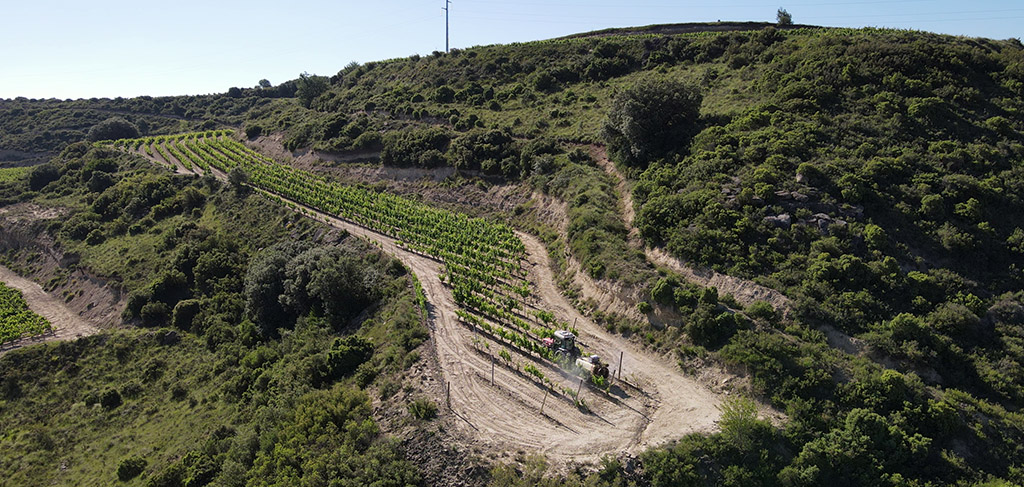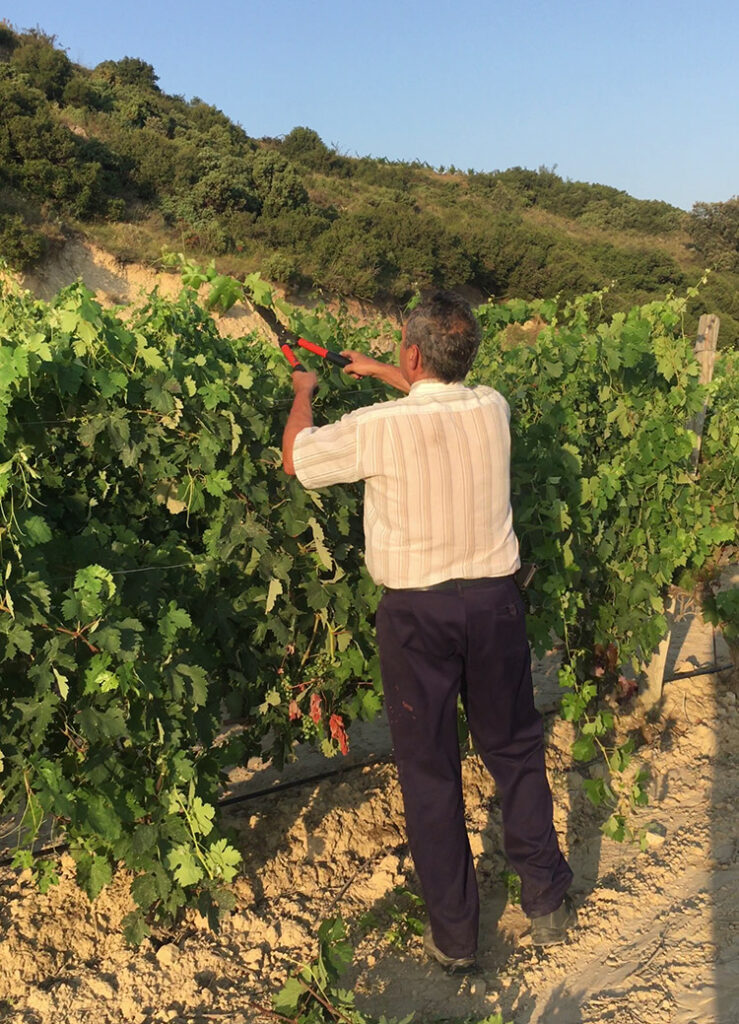
We all love a good wine; enjoy its flavors, aromas, in company or alone… But what is behind it? In this series of articles entitled “How to make a good wine” we will explain all the actions we carry out throughout the year to produce our best wines.
In today’s article we will talk about the tasks we have been doing this last month and in which we are still working. Almost all the work done in our vineyards is carried out manually except for a few.
Having said that, the first task to mention is manual blunt. Trimming is based on cutting the ends of the shoots, which are the branches of the vines, to interrupt and limit their growth. Depending on the type of vineyard (trained or bush vines), the way to perform this task will vary.
In trellised vineyards, a work is done which is the continuation of another work done in the month of June. This consists of putting the growing shoots between the wires so that they grow vertically. In this way, once the vine shoot exceeds the height of the upper wire, the tips are cut off with a pair of scissors. With this work we make sure to leave a sufficient leaf surface for the good development of the vine and to favor the aeration of the plant while allowing the tractor to pass through, thus avoiding damage to the shoots.
In goblet vines, the purpose of blunting is to generate less opposition to the force of the wind that can pull shoots off the vine, to improve aeration of the center of the vine and to allow the tractor to circulate so as not to damage the vine shoot.
The second main task we have been carrying out has been manual leaf removal. This task is based on removing the leaves (normally one by one) that cover the cluster so that it has a greater exposure to the sun and wind and, in addition, the phytosanitary treatments can reach it better.

Finally, the third task we have carried out has been the application of phytosanitary treatments. As we know, the two main diseases that can affect the vineyard, and consequently the wine, are downy mildew and powdery mildew. Both diseases are caused by fungi and are continuously present in the environment surrounding the vines and on the woody parts. For this reason, treatments are applied only when conditions of humidity and temperature are favorable for the development of the fungus or when it is foreseen that they may develop.

If you enjoyed this article, we invite you to stop by our YouTube channel, where every Saturday we upload a video addressing the same topic as here in greater depth. The video related to this article will be released on Saturday, July 31. Also, if you prefer the podcast format, on our Spotify account you can find the audio of the video every Sunday, starting this August 1, 2021.
